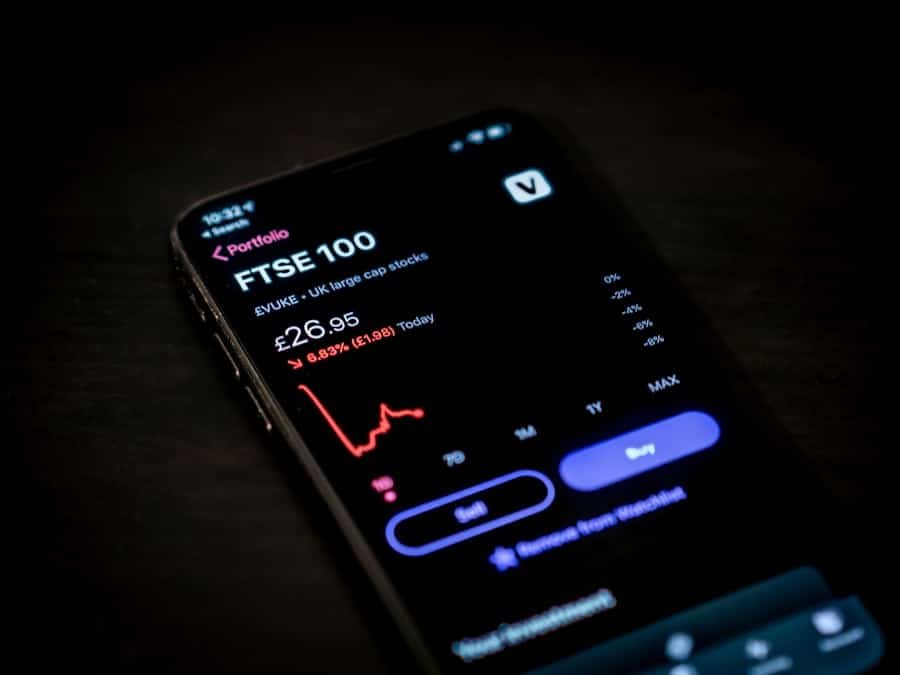Emissions trading, also known as cap and trade, is a market-based approach to pollution control that provides economic incentives for reducing pollutant emissions. This system operates by setting a cap on the total amount of emissions allowed and allocating a specific number of emission allowances to companies. Companies that emit less than their allocated allowances can sell their excess to other companies, while those exceeding their allowances must purchase additional ones.
This mechanism creates a financial incentive for companies to reduce their emissions, as those able to do so at a lower cost can profit from selling their excess allowances. Emissions trading has been implemented in various countries to address environmental issues such as greenhouse gas emissions and air pollution. The popularity of emissions trading as a policy tool stems from its ability to harness market forces to achieve environmental goals.
By creating a market for emissions allowances, this approach encourages companies to find cost-effective ways to reduce their emissions. Compared to traditional command-and-control regulations, emissions trading is considered a more efficient and flexible method for achieving environmental targets. Furthermore, emissions trading has the potential to drive innovation and investment in cleaner technologies.
As companies seek to reduce their emissions to comply with the cap, they may develop or adopt new, more environmentally friendly practices and technologies. This market-based approach thus has the potential to promote both market efficiency and environmental progress simultaneously.
Key Takeaways
- Emissions trading is a market-based approach to controlling pollution by providing economic incentives for reducing emissions.
- Market efficiency refers to the degree to which market prices reflect all available information and are able to allocate resources effectively.
- Emissions trading can improve market efficiency by creating a market for pollution permits, allowing for the most cost-effective reduction of emissions.
- Emissions trading promotes price discovery by allowing the market to determine the price of pollution permits based on supply and demand.
- Emissions trading enhances market transparency by providing clear information on the availability and price of pollution permits, allowing for better decision-making and resource allocation.
- Emissions trading influences resource allocation by incentivizing companies to invest in cleaner technologies and practices to reduce emissions.
- The future of emissions trading and market efficiency will depend on continued efforts to improve the effectiveness and transparency of emissions trading systems.
The Concept of Market Efficiency
Forms of Market Efficiency
Market efficiency can be categorized into three forms: weak form efficiency, semi-strong form efficiency, and strong form efficiency. Weak form efficiency suggests that all past prices of a security are reflected in its current price, while semi-strong form efficiency suggests that all publicly available information is reflected in market prices. Strong form efficiency suggests that all information, both public and private, is reflected in market prices.
Importance of Market Efficiency
Efficient markets are essential for the allocation of resources and the functioning of the economy. When markets are efficient, resources are allocated to their most productive uses, leading to higher levels of economic growth and welfare.
Challenges to Market Efficiency
However, markets are not always perfectly efficient, and there are various factors that can lead to market inefficiencies, such as information asymmetry, externalities, and market power. Policymakers and regulators often seek to promote market efficiency through various mechanisms, such as promoting transparency, reducing barriers to entry, and addressing market failures.
The Impact of Emissions Trading on Market Efficiency

Emissions trading has the potential to impact market efficiency in several ways. By creating a market for emissions allowances, emissions trading introduces a new asset class and price signal into the market. This can lead to increased market liquidity and price discovery, as companies trade emissions allowances based on their value and scarcity.
The introduction of emissions trading can also lead to increased market transparency, as companies are required to report their emissions and allowances holdings. This transparency can help market participants make more informed decisions and allocate resources more efficiently. Furthermore, emissions trading can incentivize companies to find the most cost-effective ways to reduce their emissions, leading to innovation and investment in cleaner technologies.
This can lead to improvements in resource allocation and productivity, as companies seek to reduce their emissions in a way that minimizes costs. Additionally, emissions trading can lead to the internalization of environmental externalities, as companies are required to account for the cost of their emissions through the purchase of allowances. This can lead to more efficient resource allocation by ensuring that the true cost of emissions is reflected in market prices.
The Role of Emissions Trading in Promoting Price Discovery
Emissions trading plays a crucial role in promoting price discovery by creating a market for emissions allowances. The trading of emissions allowances allows market participants to determine the value of emissions reductions and allocate resources accordingly. As companies trade allowances based on their scarcity and value, market prices for emissions allowances are established, providing a clear price signal for emissions reductions.
This price signal helps companies make informed decisions about how to reduce their emissions in the most cost-effective manner. The establishment of market prices for emissions allowances also provides valuable information for policymakers and regulators. By observing market prices for emissions allowances, policymakers can gain insights into the cost of reducing emissions and make informed decisions about setting emission caps and targets.
This can help ensure that environmental goals are achieved in a cost-effective manner, as policymakers can use market prices as a guide for setting emission targets that reflect the true cost of emissions reductions. Furthermore, the price discovery process in emissions trading can lead to increased market liquidity and efficiency. As companies trade emissions allowances based on their value and scarcity, market participants can make more informed decisions about how to allocate resources and invest in emissions reduction projects.
This can lead to improvements in resource allocation and productivity, as companies seek to reduce their emissions in a way that minimizes costs.
The Effect of Emissions Trading on Market Transparency
Emissions trading has a significant impact on market transparency by requiring companies to report their emissions and allowances holdings. This transparency provides valuable information for market participants, policymakers, and regulators, allowing them to make more informed decisions about how to allocate resources and achieve environmental goals. By requiring companies to report their emissions and allowances holdings, emissions trading helps ensure that the true cost of emissions is reflected in market prices.
The transparency provided by emissions trading also helps promote accountability and trust in the market. Market participants can have confidence that companies are accurately reporting their emissions and complying with emission caps, leading to increased trust in the market. This can help promote market integrity and reduce the risk of fraud or manipulation in the emissions trading market.
Furthermore, the transparency provided by emissions trading can lead to increased market efficiency by helping market participants make more informed decisions. By having access to information about emissions allowances holdings and market prices, companies can make more informed decisions about how to reduce their emissions in the most cost-effective manner. This can lead to improvements in resource allocation and productivity, as companies seek to reduce their emissions in a way that minimizes costs.
The Influence of Emissions Trading on Resource Allocation

Emissions trading has a significant influence on resource allocation by incentivizing companies to find the most cost-effective ways to reduce their emissions. By creating a financial incentive for companies to reduce their emissions, emissions trading encourages companies to invest in cleaner technologies and processes that can help them achieve their emission reduction targets at a lower cost. This can lead to improvements in resource allocation and productivity, as companies seek to reduce their emissions in a way that minimizes costs.
Furthermore, emissions trading can lead to the internalization of environmental externalities by requiring companies to account for the cost of their emissions through the purchase of allowances. This can help ensure that the true cost of emissions is reflected in market prices, leading to more efficient resource allocation. By internalizing environmental externalities, emissions trading helps ensure that companies take into account the full social cost of their actions when making decisions about how to reduce their emissions.
Additionally, emissions trading can drive innovation and investment in cleaner technologies, leading to improvements in resource allocation and productivity. As companies seek to reduce their emissions in order to comply with emission caps, they may invest in research and development of new technologies that can help them achieve their emission reduction targets at a lower cost. This can lead to improvements in resource allocation by driving investment in technologies that can help achieve environmental goals more efficiently.
The Future of Emissions Trading and Market Efficiency
Emissions trading has the potential to play a significant role in promoting market efficiency by harnessing market forces to achieve environmental goals. By creating a market for emissions allowances, emissions trading introduces a new asset class and price signal into the market, leading to increased market liquidity and price discovery. The transparency provided by emissions trading helps promote accountability and trust in the market, leading to increased market integrity and efficiency.
Looking ahead, it is important for policymakers and regulators to continue supporting the development of emissions trading markets and ensuring that they operate effectively. This includes setting appropriate emission caps and targets that reflect the true cost of emissions reductions, promoting transparency and accountability in the market, and addressing any potential barriers or challenges that may arise. By doing so, policymakers can help ensure that emissions trading continues to play a significant role in promoting market efficiency and driving environmental progress in the future.
For more insights on market efficiency and emissions trading, check out the article “The Role of Carbon Pricing in Achieving Climate Goals” on The Econosphere. This article delves into the impact of carbon pricing on reducing greenhouse gas emissions and its effectiveness in achieving climate goals. It provides a comprehensive analysis of the role of emissions trading in creating a more efficient and sustainable market.
FAQs
What is emissions trading?
Emissions trading, also known as cap and trade, is a market-based approach to controlling pollution by providing economic incentives for achieving reductions in the emissions of pollutants.
How does emissions trading work?
Under an emissions trading system, a government sets a limit or cap on the amount of a pollutant that can be emitted. Companies are then issued emissions permits which represent the right to emit a specific amount. If a company reduces its emissions, it can sell its extra permits to other companies.
What is market efficiency?
Market efficiency refers to the degree to which market prices reflect all available, relevant information. In an efficient market, prices fully reflect all available information and trade at their intrinsic values.
How does emissions trading influence market efficiency?
Emissions trading can influence market efficiency by creating a market for pollution permits, which allows companies to trade permits based on their individual needs and costs. This can lead to a more efficient allocation of resources and incentivize companies to find the most cost-effective ways to reduce emissions.
What are the potential benefits of emissions trading on market efficiency?
Emissions trading can lead to cost savings for companies, as they can choose the most cost-effective way to reduce emissions. It can also incentivize innovation and the development of cleaner technologies. Additionally, it can lead to a more efficient allocation of resources and reduce the overall cost of achieving emissions reductions.








